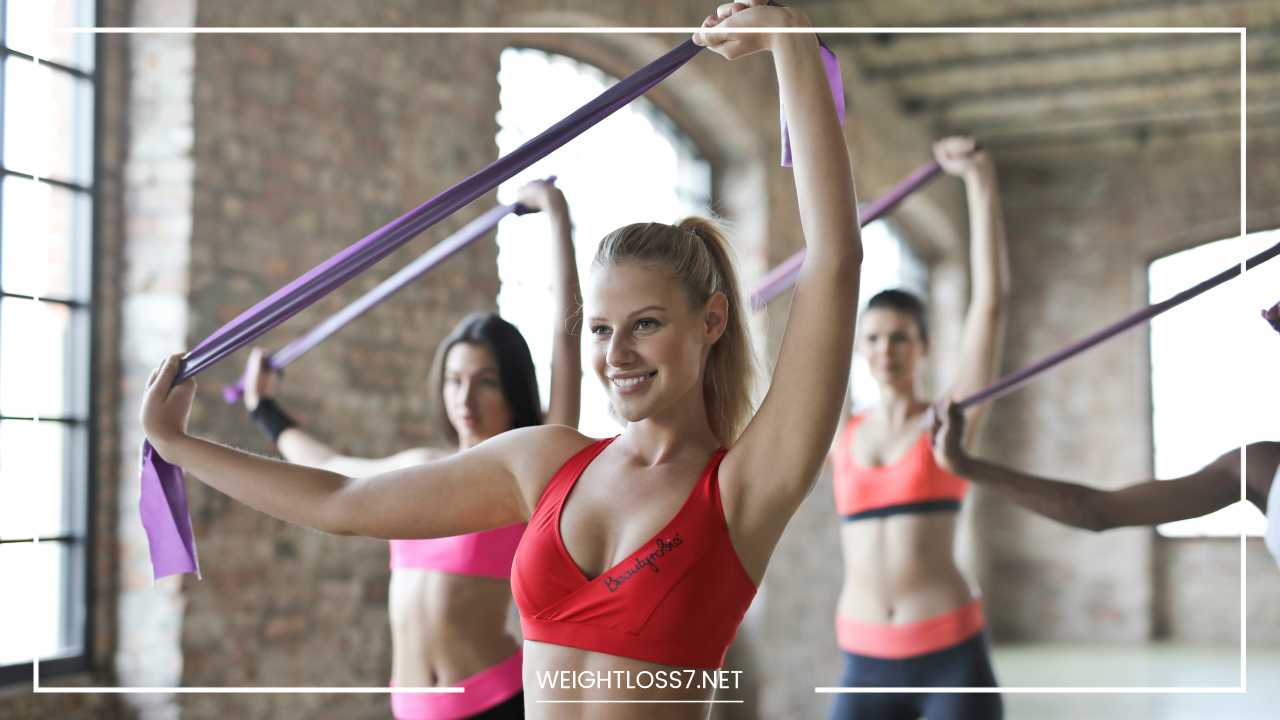Effective Exercises: Get Fit & Feel Great

Effective Exercises
Effective Exercises: A Guide to Getting Fit and Feeling Fantastic
Exercise. It’s a word that can spark excitement for gym rats and groans from couch potatoes alike. But regardless of your initial reaction, there’s no denying the transformative power of physical activity.
It’s not just about sculpted physiques and bulging biceps; exercise is a cornerstone of well-being, impacting both your physical and mental health.
This comprehensive guide dives deep into the world of exercise. We’ll explore the compelling reasons why you should move your body, delve into a variety of effective exercises, and equip you with the knowledge to craft a personalized routine that aligns with your lifestyle and goals.
The Power of Exercise: Why You Should Move Your Body
Let’s be honest, the most immediate perk of exercise is the way it makes you feel. Physical activity is a natural mood booster, releasing endorphins that combat stress and leave you feeling energized and positive.
But the benefits extend far beyond a temporary emotional lift. Here’s how exercise becomes an investment in your overall health:
-
Manages Weight: Exercise is a calorie-burning machine, aiding in weight loss or weight management. It helps create a calorie deficit, where you burn more calories than you consume, leading to weight loss.
-
Builds a Strong Foundation: Regular exercise strengthens muscles and bones, improving your physical function and reducing the risk of injuries. Strong muscles support your joints, enhance balance, and make everyday activities easier.
-
Keeps Chronic Diseases at Bay: Exercise is a powerful shield against chronic diseases. It reduces the risk of heart disease, stroke, type 2 diabetes, and even some types of cancer. Regular physical activity helps manage blood pressure, blood sugar levels, and cholesterol.
-
Sleep Like a Baby: Struggling to catch those precious Zzz’s? Exercise can be your sleep savior. Regular physical activity promotes better sleep quality, leaving you feeling more rested and energized throughout the day.
-
Sharpens Your Mind: Exercise isn’t just about physical benefits; it can also boost your brainpower. Regular physical activity enhances cognitive function, memory, focus, and concentration.
Finding Your Perfect Fit: A Journey Through Effective Exercises
The beauty of exercise lies in its variety. There’s truly something for everyone, regardless of fitness level or preferences. Here’s a roadmap to explore some popular and effective exercises:
-
Cardio for the Win: Cardiovascular exercise, often called cardio, gets your heart pumping and improves your overall fitness level. Popular options include brisk walking, running, swimming, cycling, dancing, and jumping rope. These activities elevate your heart rate for a sustained period, maximizing calorie burning and cardiovascular health.
-
Strength Training: Building a Rock-Solid You: Strength training exercises build and maintain muscle mass. You can utilize bodyweight exercises like squats, lunges, push-ups, planks, and dips, or incorporate free weights, resistance bands, or weight machines. Strength training tones your muscles, increases bone density, and improves your metabolism.
-
HIIT it Hard: High-Intensity Interval Training: HIIT workouts are all about pushing your limits in short bursts. They alternate between intense exercise intervals and periods of rest or recovery. This high-intensity approach is a time-efficient way to burn significant calories and improve cardiovascular health in a shorter timeframe. Popular HIIT workouts include sprinting intervals, jumping jacks, burpees, and mountain climbers.
-
Unlocking Flexibility: The Power of Stretching: Stretching exercises improve your range of motion and flexibility. This not only helps prevent injuries but also improves overall performance in other exercises. Yoga, Pilates, and dedicated stretching routines can enhance your flexibility and leave you feeling limber and loose.
-
Mind-Body Connection: Yoga and Pilates: These holistic practices combine physical postures (asanas) with breathing exercises (pranayama) to improve flexibility, strength, balance, and core stability. Yoga and Pilates promote relaxation, stress reduction, and mindfulness, making them excellent options for a well-rounded workout.
Crafting Your Exercise Odyssey: Building a Personalized Routine
Now that you’re armed with knowledge about different exercise types, it’s time to design a routine that caters to your specific needs and preferences. Here are some key factors to consider:
-
Set SMART Goals: Instead of vague aspirations, set Specific, Measurable, Attainable, Relevant, and Time-bound goals. This will provide direction and motivation, helping you track your progress and celebrate milestones. For example, instead of saying “I want to get in shape,” set a goal like “I will walk for 30 minutes three times a week for the next month.”
-
Start Slow and Steady Wins the Race: Don’t jump into intense workouts if you’re a beginner. Begin with a manageable routine and gradually increase the intensity and duration as you get fitter. Listen to your body and avoid pushing yourself to the point of pain or exhaustion.
-
Find the Fun Factor: Working out shouldn’t feel like a chore. Explore different exercises until you discover activities you genuinely enjoy. Maybe you love the social aspect of group fitness classes, the meditative flow of yoga, or the thrill of pushing your limits with HIIT. When exercise is enjoyable, you’re more likely to stick with it in the long run.
-
Mix it Up to Keep it Up: Don’t get stuck in a rut! Incorporate different types of exercises into your routine to keep your workouts interesting and challenge your body in new ways. This can help prevent plateaus and ensure well-rounded fitness development.
-
Schedule Your Sweat Sessions: Treat your workouts like important appointments. Block out time in your calendar and stick to it as much as possible. This will help you stay consistent and avoid letting exercise fall by the wayside.
-
Listen to Your Body’s Wisdom: Rest days are crucial for recovery. Don’t feel guilty about taking breaks when your body needs them. Pushing yourself too hard can lead to injuries and hinder your progress. Pay attention to your body’s signals and prioritize rest when needed.
Beyond the Physical: The Mental Edge of Exercise
Exercise isn’t just about physical benefits; it’s a powerful tool for improving your mental well-being. Here’s a deeper dive into how exercise positively impacts your mental state:
-
Stress Buster: Physical activity helps to release endorphins, hormones that have mood-boosting effects. Exercise can alleviate stress, anxiety, and even symptoms of depression.
-
Confidence Booster: Regular exercise can lead to improvements in body image and a sense of accomplishment. This can boost your self-esteem and confidence, making you feel better about yourself inside and out.
-
Combating Depression: Exercise is a scientifically proven strategy for managing and reducing symptoms of depression. It can improve mood, energy levels, and sleep quality, all of which play a significant role in managing depression.
-
Sleep Symphony: As mentioned earlier, exercise promotes better sleep, which is crucial for overall mental health. Regular physical activity can help you fall asleep faster, sleep more soundly, and wake up feeling refreshed.
Making Exercise a Habit: Sticking with Your Fitness Journey
Building an exercise routine that becomes a permanent fixture in your life takes dedication and consistency. Here are some tips to help you make exercise a regular part of your life:
-
Find a Workout Buddy: Having a workout partner can provide motivation, support, and accountability. Partner up with a friend or family member to make exercise a social activity and keep each other on track.
-
Track Your Progress: Keeping a workout log or using a fitness app can help you visualize your progress. Seeing how far you’ve come can be a powerful motivator to keep going.
-
Reward Yourself: Celebrate your milestones! Completing a workout program, reaching a weight loss goal, or simply sticking with your routine for a month are all achievements worth celebrating. Reward yourself for your hard work to stay motivated.
-
Make it Convenient: Choose activities that fit seamlessly into your schedule. If you’re short on time, opt for shorter, high-intensity workouts. Consider exercising at home or outdoors if commuting to a gym is a barrier.
-
Find Inspiration: Surround yourself with positive influences. Follow fitness accounts on social media, read inspiring fitness blogs, or watch workout videos for motivation.
-
Focus on Progress, Not Perfection: Don’t get discouraged by setbacks or missed workouts. Everyone has off days. The key is to get back on track and keep moving forward. Focus on progress, not perfection, and celebrate even small victories.
Special Considerations: Tailoring Your Exercise Routine
While the core principles of exercise remain constant, it’s important to tailor your routine to your unique circumstances. Here are some aspects to consider for a personalized approach:
-
Fitness Level: Beginners should prioritize low-impact exercises like walking, swimming, or bodyweight exercises. Gradually increase intensity and duration as fitness improves. Experienced exercisers can incorporate more challenging activities like running, HIIT workouts, or weightlifting with heavier weights.
-
Age: As we age, our bodies have different needs. Older adults may benefit from low-impact exercises that focus on maintaining balance, flexibility, and strength. Consider activities like tai chi, yoga, or water aerobics.
-
Health Conditions: If you have any pre-existing health conditions, it’s crucial to consult with your doctor before starting a new exercise routine. They can advise on safe and appropriate exercises for your specific situation.
-
Pregnancy: Exercise during pregnancy is generally safe and beneficial for both mother and baby. However, it’s important to choose low-impact exercises like walking, swimming, or prenatal yoga classes. Listen to your body and avoid strenuous activity.
-
Injuries: If you’re recovering from an injury, certain exercises may be off-limits. Consult a physical therapist to create a safe and effective rehabilitation program that helps you regain strength and mobility.
Adding Variety and Avoiding Plateaus
Keeping your exercise routine interesting is key to staying motivated and avoiding plateaus. Here are some ways to add variety:
-
Try New Activities: Step outside your comfort zone and explore new exercise options. Take a dance class, try rock climbing, or go for a hike. You might discover a hidden passion for a new activity.
-
Change Your Scenery: Break out of the gym rut! Exercise outdoors whenever possible. Go for a run in the park, bike ride on a scenic trail, or try an outdoor yoga class. Immersing yourself in nature can add a refreshing element to your workout.
-
Group Fitness Classes: Group fitness classes offer a fun and social way to exercise. They provide structured workouts led by certified instructors, keeping you engaged and motivated. Explore options like Zumba, spin classes, or bootcamp workouts.
-
Seasonal Activities: Embrace the changing seasons! During the winter, you could try ice skating or cross-country skiing. In the summer, take advantage of outdoor activities like swimming, kayaking, or beach volleyball.
-
Interval Training: Incorporate interval training principles into your workouts. This involves alternating periods of high-intensity exercise with periods of rest or low-intensity activity. This keeps your heart rate up and helps you burn more calories in a shorter time.
Safety First: Essential Tips for Preventing Injuries
While exercise is beneficial, it’s important to prioritize safety to avoid injuries. Here are some key tips:
-
Proper Warm-up and Cool-down: Always warm up your muscles before exercise with light cardio and dynamic stretches. This prepares your body for activity and reduces the risk of injury. Similarly, cool down after your workout with static stretches to improve flexibility and prevent muscle soreness.
-
Listen to Your Body: Pain is a warning sign. If you experience any pain during exercise, stop immediately. Pushing through pain can lead to serious injuries.
-
Use Proper Form: Maintaining proper form during exercise is crucial to avoid injury. If you’re unsure about the proper technique for an exercise, ask a certified personal trainer for guidance.
-
Stay Hydrated: Drink plenty of water before, during, and after your workout to stay hydrated. Dehydration can lead to fatigue, muscle cramps, and even heatstroke.
-
Invest in Proper Gear: Wear appropriate shoes and clothing for your chosen activity. Supportive shoes can prevent foot and ankle injuries, while breathable clothing helps regulate your body temperature.
Final Word: Embrace Movement, Embrace Life
Exercise is a powerful tool for transforming your physical and mental well-being. It’s not about achieving a specific physique or chasing unrealistic goals.
It’s about embracing movement, celebrating progress, and feeling fantastic in your own skin. With dedication, consistency, and the tips outlined in this guide, you can create a sustainable exercise routine that empowers you to reach your fitness goals and live a healthier, happier life.
Remember, the most important step is to simply get started. So lace up your shoes, step outside, and embark on your transformative journey today!

















